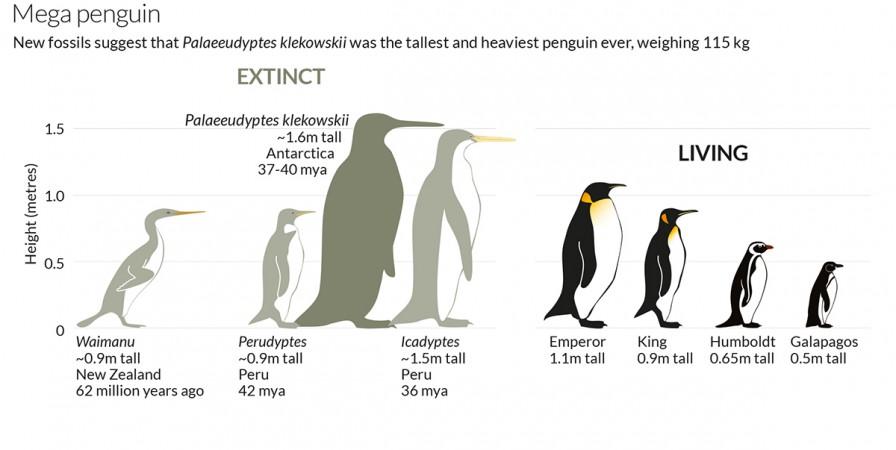
Scientists from Argentina discovered a giant prehistoric penguin that might have dwarfed even the emperor penguins (the largest penguin found on earth today). This giant penguin, known as the Palaeeudyptes klekowskii is estimated to have stood two metres tall from toe to beak tip, weighing around 115 kilograms.
The prehistoric penguin used to roam the Antarctic coast around 37 to 40 million years back. According to what Carolina Acosta Hospitaleche said to the NewScientist, this was "a wonderful time for penguins, when 10 to 14 species lived together along the Antarctic coast."
Hospitaleche has been excavating Seymour Islands for fossil deposits, which is an area, just off the Antarctic Peninsula. Around 40 million years ago, this region was a much warmer area, which must have made it a better habitat for the bigger penguins.
Hospitaleche is excavating this site for quite some time now, and it was earlier this year, that she had reportedly found the most complete skeleton of the P klekowskii penguin. However, only a dozen bones of this particular prehistoric penguin could be discovered.
Recently, she discovered two of the bigger bones of the penguin's body – a wing bone, and a tarsometatarsus (a fusion of the foot and the ankle bones of the penguins). This tarsometatarsus stands at 9.1 centimetres, the biggest bone of the kind, found in any penguin. She has based the estimate height of the P klekowskii on this bone and estimates that it must have stood at 2.01 metres or six feet and seven inches from toe to beak tip. Compared to that, the emperor penguin, the largest penguin of the modern era stands at 1.36 metres, which measures up to four feet five inches.
Another extinct penguin, known as the Icadyptes was believed to be the tallest penguin till date. This penguin was found in Peru, and roamed the earth around 36 million years back, and stood at 1.5 metres, or five feet tall.
However, the estimated height of the P klekowskii could be wrong, as many scientists believe that the proportion of the bones in the big and prehistoric penguins could have been different from that of the modern penguins.
Although the size of the P klekowskii is in question, scientists believe that if it was really six feet seven inches tall, it could have stayed under water for periods of around 40 minutes, giving it ample time to hunt fish.

















